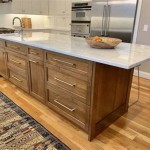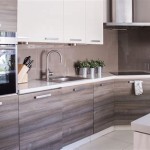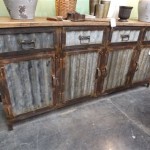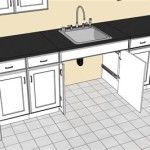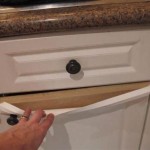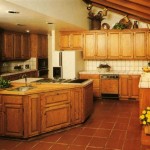Above Kitchen Cupboard Lighting: Illuminating Your Space
Above kitchen cupboard lighting represents a nuanced approach to enhancing a kitchen's ambiance and functionality. Beyond merely providing illumination, it contributes to a layered lighting scheme that complements existing fixtures and creates a visually appealing and practical environment. The strategic placement and design of these lights can transform a kitchen's character, accentuating architectural details, increasing perceived space, and adding a touch of sophistication.
The success of above cupboard lighting hinges on understanding its various forms and their corresponding benefits. From the warm glow of strategically positioned LED strips to the focused beams of recessed spotlights, the selection of lighting options is vast. Each choice offers a unique aesthetic and serves a distinct purpose within the overall kitchen design. This article will delve into the key considerations for incorporating above cupboard lighting effectively, exploring the types of lights available, installation techniques, and design considerations.
Types of Above Kitchen Cupboard Lighting
Several lighting options are suitable for placement above kitchen cupboards, each offering different characteristics and advantages. The selection process should consider the desired aesthetic, the kitchen's existing lighting scheme, and the specific purpose the lighting is intended to serve.
LED Strip Lights: These are a particularly popular choice due to their versatility, energy efficiency, and relatively simple installation. LED strip lights consist of a flexible circuit board populated with light-emitting diodes (LEDs). They are typically adhesive-backed, making them easy to attach to the top of cabinets. Their low profile ensures that they remain discreetly hidden from view. These lights provide a diffused, even glow that can be used to create a soft, ambient effect. LED strip lights come in a variety of color temperatures, allowing for customization of the light's warmth or coolness. Some LED strip lights are also dimmable, giving greater control over the intensity of the light.
Puck Lights: Puck lights are small, circular light fixtures that can be surface-mounted or recessed into the underside of a cabinet. When used above cupboards, they cast a focused beam of light upwards, creating dramatic highlights and shadows. Puck lights are often used to accentuate decorative items displayed on top of the cabinets or to draw attention to architectural features such as crown molding. They are available in both LED and halogen versions, although LED variants are generally preferred for their energy efficiency and longer lifespan.
Rope Lights: Rope lights are flexible, linear light sources encased in a protective plastic tubing. They are similar to LED strip lights in that they provide a continuous line of light, but they tend to be more robust and weather-resistant, making them suitable for kitchens where moisture or humidity may be a concern. Rope lights are often used to create a decorative effect, outlining the perimeter of the cupboards and adding a touch of visual interest. They are relatively easy to install and can be cut to length to fit specific spaces.
Recessed Spotlights: Recessed spotlights offer a more sophisticated and integrated look. They are installed flush with the ceiling and cast a focused beam of light downwards onto the tops of the cupboards. Recessed spotlights require more complex installation than other options, as they necessitate cutting holes in the ceiling and wiring the fixtures to the electrical system. However, they provide a clean and seamless aesthetic that can enhance the overall design of the kitchen. They are particularly effective for highlighting specific areas or objects.
Individual Up-lights: These small, individual light fixtures are placed atop the cupboards and directed upwards. They are ideal for highlighting decorative items or creating a dramatic, theatrical effect. Individual up-lights can be easily moved and repositioned, allowing for flexibility in the lighting design. They are available in a variety of styles and finishes, making it easy to find options that complement the kitchen's decor.
Installation Considerations for Above Cupboard Lighting
Proper installation is crucial for the safe and effective operation of above cupboard lighting. Regardless of the chosen lighting type, several factors must be considered to ensure a successful outcome. These factors range from electrical safety to aesthetic concerns, and should be carefully addressed during the planning and execution phases of the project.
Electrical Safety: Working with electricity can be dangerous, and it is essential to prioritize safety throughout the installation process. Before commencing any electrical work, the power to the circuit serving the kitchen should be turned off at the breaker box. If unsure about electrical procedures, it is strongly recommended to hire a qualified electrician to perform the installation. They can ensure that the wiring is properly installed, that the connections are secure, and that the lighting system meets all applicable electrical codes.
Power Source: Determining the power source for the above cupboard lighting is a critical step. Options include tapping into an existing electrical outlet, wiring directly to the electrical system, or using a plug-in transformer. If tapping into an existing outlet, it is important to ensure that the circuit is not overloaded. Wiring directly to the electrical system requires advanced electrical knowledge and should only be performed by a qualified electrician. Plug-in transformers offer a simpler solution, but they may require hiding the transformer and cord to maintain a clean aesthetic.
Wiring and Connections: Proper wiring and connections are essential for the safe and reliable operation of the lighting system. All wires should be properly insulated and secured to prevent shorts or other electrical hazards. Use wire connectors that are appropriate for the gauge of wire being used, and ensure that all connections are tight and secure. Exposed wires should be avoided at all costs. If running wires through walls or cabinets, use appropriate cable clips or staples to secure them and prevent damage.
Light Placement and Spacing: The placement and spacing of the lights will significantly impact the overall effect. For LED strip lights and rope lights, it is generally recommended to run the lights along the entire length of the cupboards to create a continuous line of light. For puck lights and spotlights, consider the specific areas you want to highlight and space the lights accordingly. Experiment with different placements to achieve the desired effect.
Concealing Wires and Fixtures: One of the key goals of above cupboard lighting is to create a clean and unobtrusive look. This means concealing the wires and fixtures as much as possible. Use wire concealers or cable management systems to hide exposed wires. If using plug-in transformers, find a discreet location to hide them, such as inside a cabinet or behind a decorative item. Choose light fixtures that are low profile and blend seamlessly with the surrounding décor.
Dimming Capabilities: Consider incorporating dimming capabilities to control the intensity of the light. Dimmers allow for adjusting the brightness of the lights to suit different moods and activities. Dimmers are available for most types of lighting, including LED strip lights, puck lights, and recessed spotlights. When selecting a dimmer, ensure that it is compatible with the type of lighting being used.
Design Considerations for Above Kitchen Cupboard Lighting
The aesthetic impact of above cupboard lighting is undeniable, and careful consideration must be given to its design to ensure it complements the overall kitchen aesthetic. This involves selecting the appropriate light color, considering the style and finish of the fixtures, and integrating the lighting seamlessly into the space.
Light Color Temperature: The color temperature of the light can significantly impact the mood and ambiance of the kitchen. Color temperature is measured in Kelvin (K), with lower numbers indicating warmer, yellower light and higher numbers indicating cooler, bluer light. For kitchens, a color temperature of between 2700K and 3000K is generally recommended for creating a warm and inviting atmosphere. Cooler color temperatures (4000K or higher) can create a more modern and energetic feel, but they may also appear harsh and sterile in some kitchens. Consider the existing lighting in the kitchen and choose a color temperature that complements it.
Fixture Style and Finish: The style and finish of the light fixtures should complement the overall design of the kitchen. Choose fixtures that are in keeping with the kitchen's aesthetic, whether it is traditional, modern, or transitional. Consider the finish of the fixtures and choose options that match or complement the existing hardware and appliances. For example, if the kitchen has stainless steel appliances, consider choosing light fixtures with a stainless steel finish. If the kitchen has a more rustic feel, consider choosing fixtures with a bronze or oil-rubbed finish.
Accent Lighting and Focal Points: Above cupboard lighting can be used to create accent lighting and highlight focal points. Consider using puck lights or spotlights to accentuate decorative items displayed on top of the cupboards, such as vases, sculptures, or plants. Use lighting to draw attention to architectural features such as crown molding or decorative trim. Think about the overall balance and composition of the lighting and ensure that it is visually appealing and well-integrated.
Layered Lighting Scheme: Above cupboard lighting should be part of a layered lighting scheme that includes ambient lighting, task lighting, and accent lighting. Ambient lighting provides overall illumination to the kitchen, while task lighting provides focused light for specific tasks such as cooking and cleaning. Accent lighting adds visual interest and highlights specific areas or objects. By combining these different types of lighting, a well-balanced and functional kitchen lighting system can be created.
Impact on Perceived Space: Above cupboard lighting can significantly impact the perceived size and shape of the kitchen. By directing light upwards, a sense of height and spaciousness can be created. This is particularly effective in kitchens with low ceilings. Conversely, if the lighting is too bright or too focused, it can make the kitchen feel smaller and more cramped. Experiment with different lighting arrangements to achieve the desired effect.
Maintenance and Longevity: Consider the maintenance requirements and longevity of the lighting fixtures. LED lights are generally preferred for their long lifespan and low energy consumption. However, it is important to choose high-quality LED lights from reputable manufacturers to ensure that they provide consistent and reliable performance. Consider the ease of replacing the light bulbs or fixtures and choose options that are easy to maintain.

Over Cabinet Lighting Using Led Modules Or Strip Lights Light Kitchen Cabinets Above

Above Cabinet Lighting Photos Ideas Houzz

Over Cabinet Lighting Makes This New Kitchen Shine Cliqstudios

How To Choose And Install Led Strip Lights For Kitchen Cabinets

Rgb Strip Lights Are Used For Above Kitchen Cabinet Accent Lighting Ecolocity Led

Over Cabinet Lighting Kitchens Elementalled Com Light Kitchen Cabinets Strip Best

6 Types Of Kitchen Accent Lighting Tutor

Under Or Above Cabinet Lighting Brighten Your Home With

Inside Glass Cabinet Lighting How To Installing

Super Easy Above And Under Kitchen Cabinet Lighting Solution Harbour Breeze Home
Related Posts


